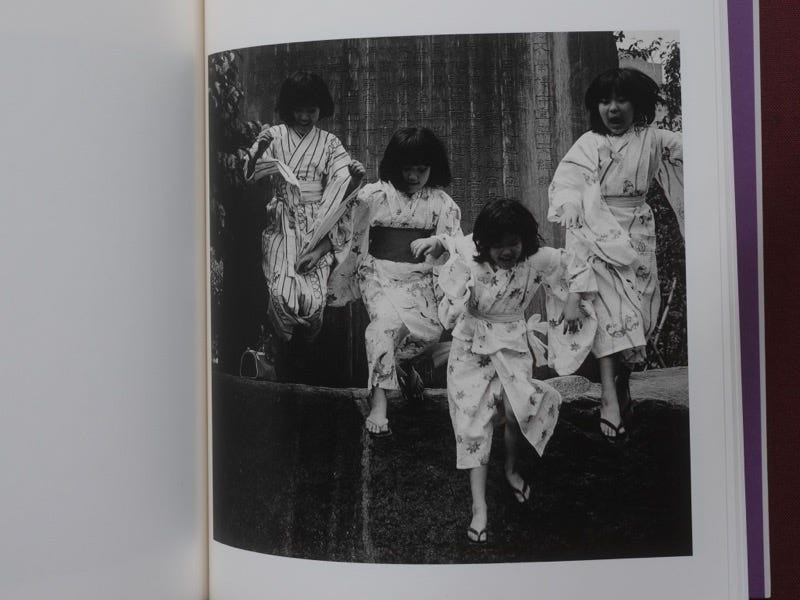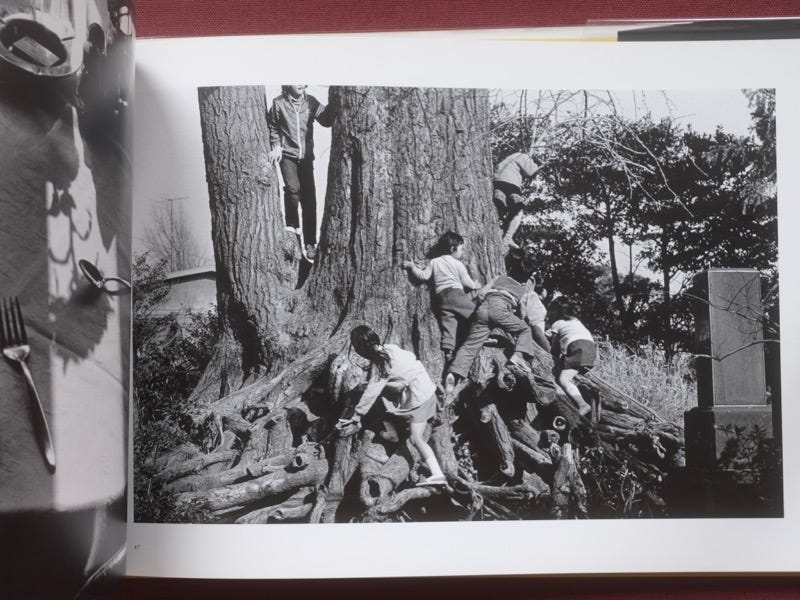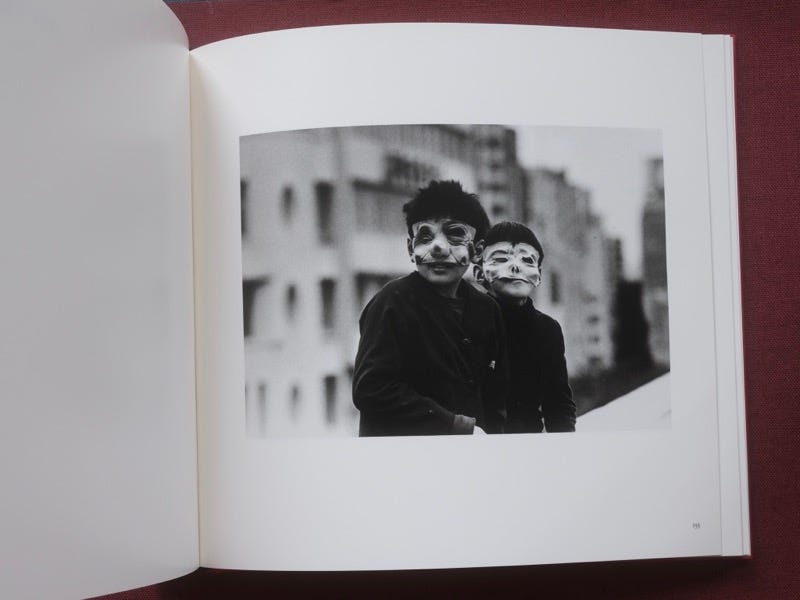Greetings from Tokyo. In this newsletter, I’ll be discussing an upcoming exhibition in which my work is included. After that, I’ll share some thoughts on photographs of children by the Japanese master, Issei Suda. Let’s dive in.
In 2020, after the death of my daughter, part of the way I worked through my grief was by creating a book of photography. That work, The Consolation of Dew, won First Place in the book category at the 2020 Tokyo International Foto Awards (TIFA).
Ordinarily, it would have been featured by TIFA in an exhibition the following year. But due to Covid, exhibitions were not possible in 2020 or 2021. So this month, TIFA is putting on a combined exhibition to honor the winners from the last three years of competition. It will be held from July 20-24 at the Shibuya Cultural Center in Tokyo,1 and the winning work will simultaneously be showcased via projector at the House of Lucie gallery in Budapest.
Due to the size of the combined exhibition, each honoree can be represented by only one photograph. In my book, meaning comes from the overall sequence and the accompanying text, so choosing one photograph was difficult. But ultimately, I tried to select one that most encapsulates what the book is about.
Facing the photograph in the book is my translation of a haiku by the 17th century poet Yasukawa Rakugo:
is there any face
that looks like hers? I search among
the dancing childrenChildren playing freely, on the streets or in the park, are very much part of the landscape of Tokyo. Yet one such searches almost in vain for photographs of them in the works of Japan’s internationally famous street photographers such as Daidō Moriyama.
One photographer who frequently took photos of children is Issei Suda. Suda is peerless among his generation of Japanese photographers, yet not well known outside of Japan. That is starting to change since his death in 2019 with major exhibitions in Europe and monographs by Western publishers.
Two of my favorite books by Suda that include many photographs of children are Fūshi Kaden and Waga-Tōkyō 100.
In these books, children are part of a larger milieu that includes adults, animals, shops, the waterfront, and whatever else caught Suda’s roving eye.
In 2015, late in his life, Suda published Childhood Days, an entire book of photographs of children. The photos were taken in the 1970s and early 1980s, the same years as many of his great street photographs of eastern Tokyo. Some were included in other books, but many were published in this book for the first time.
Suda’s essay in the afterword to Childhood Days discusses his interest in the subject:
“I don’t believe that every person in the world yearns after his or her childhood. Every childhood has its times of grief and suffering. However, once our childhood days lie far behind us, and we find ourselves approaching the end of our life, I suppose we all remember our time as little kids with . . . fondness.”
Suda doesn’t shirk from sentimentality, but he also recognizes and honors the depth and independence of children’s lives, that they can be wild or cruel, lonely or sorrowful. To this end, he often photographs children without adults in the frame, sometimes in small groups, sometimes alone.
Later in life, despite his continuing interest in street photography, Suda turned toward photographing landscapes, mannequins, and cityscapes that were largely devoid of people. In a 2012 essay, he lamented:
“Nowadays, taking people’s snaps has become an act that translates into risky behavior. When prowling around on a beach in summer with a camera, I get stopped by avid policemen; mothers tend to overreact as soon as I point my lens at their little boys and girls; and I end up apologizing to all sides. Photography has lost one of its functions as a means of expression, while society on the other hand keeps moving on without bothering to keep alive a memory or two.”
With the age of social media, photography has more than regained its function as a means of expression; if anything, we are now drowning in memories. However, what Suda observed about the way people react to street snapshots is even more frequently true today, and the concerns of parents are not easily dismissed.
Grief emboldened me to watch and to photograph that I might not otherwise take today. I hope that my photographs were as respectful as Suda’s were and that they can keep alive a memory or two.
That’s all for July. Next month, I expect to have another exhibition announcement. If you are in Tokyo, it is the one show I would love for you to visit—but more about that in the next newsletter.
With best wishes for a peaceful and pleasant summer,
Joel
Shibuya Cultural Center, 23-11 Sakuragaoka-cho, Shibuya-ku, Tokyo.









